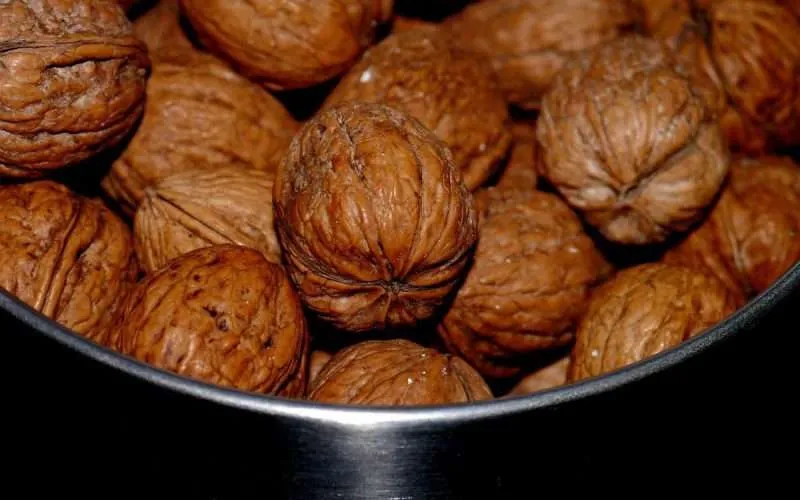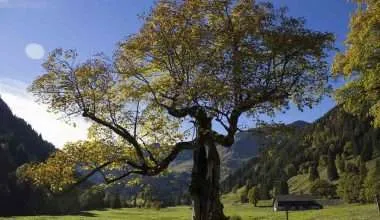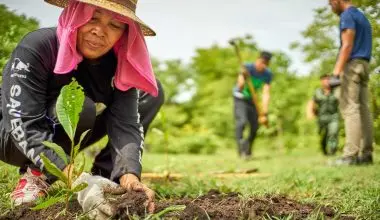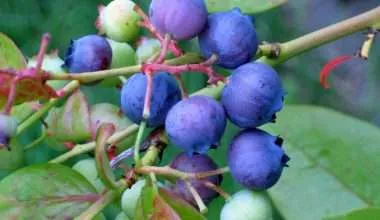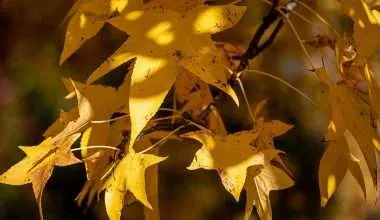Table of Contents Show
Walnuts are one of the most well-known nuts in the World. They are both delicious and nutritious food items that are full of protein and fiber.
Though it might be a slightly surprising fact that walnuts actually come from a walnut fruit.
The walnut fruit grows on the walnut tree, a fruit tree that takes around 7 years to mature and bear fruits. Walnut fruit is a large distinctive, baseball-sized fruit, which is not edible but is used in other items such as pickles.
The edible nut part that is inside a hard shell is a seed of the walnut fruit. So there’s a walnut fruit which you peel or cut to get to the seed part and breaking the shell will let you have the delicious nut inside.
The Walnut family has many species of nut trees and every tree has its unique characteristic. These characteristics uniquely differentiate the various species of the fruit tree. Keep reading to know more about the walnut plant and tips for growing walnut fruits.
Fruit-Producing Walnut Tree
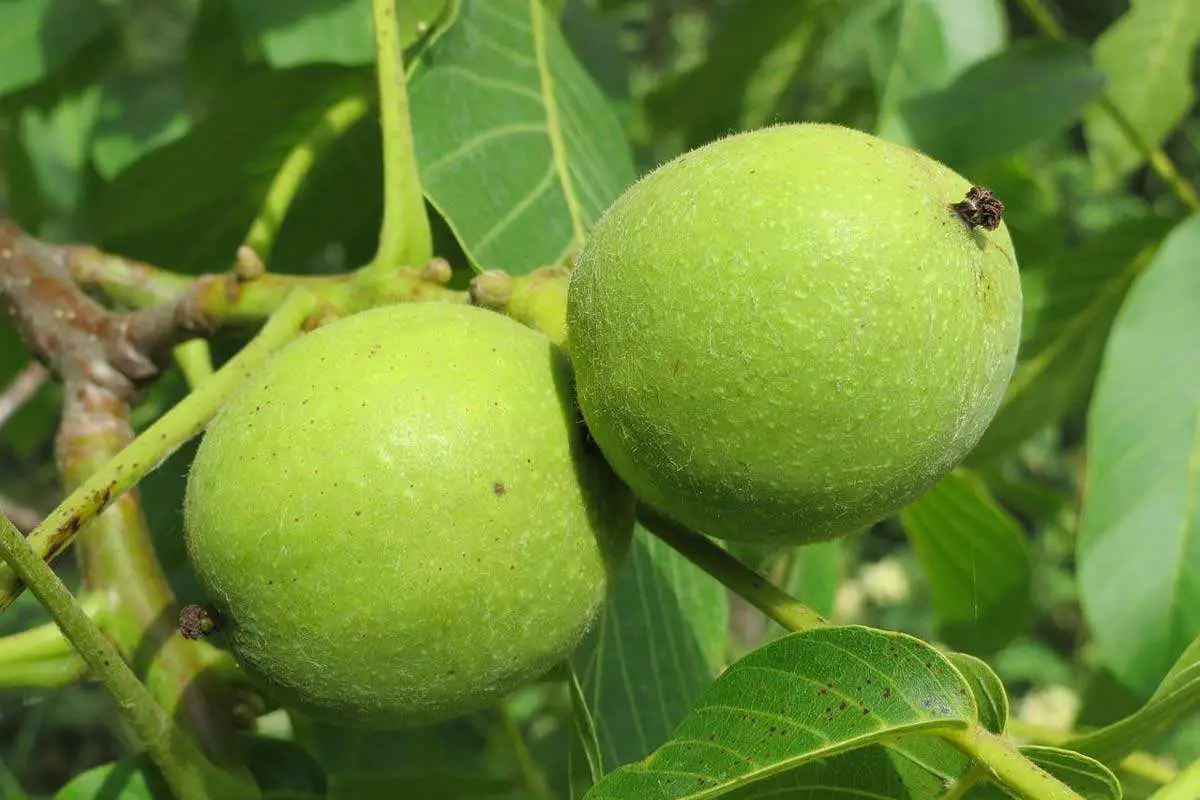
The Walnut tree needs a warm climate to grow.
There are a number of different types of walnut trees among which certain types bear fruits while others don’t. Four of the most common fruit-producing walnut trees include
- Black Walnut tree
- English Walnut trees
- Butternut (White Walnut)
- Heartnut
The walnut plant requires care to bear healthy walnut fruits with delicious nuts inside them.
The number of nuts produced by the tree depends on its environmental conditions and the amount of nutrients it gets.
Suitable Weather For a Walnut Tree
A walnut plant grows into a young tree in warm climate conditions. According to Utah State University, walnut trees are sensitive to cold and do not like cold regions. The walnut plant that grows in regions with cold climates bears less fruit.
Heartnut is an exception among walnut trees. Heartnut is native to Japan and is very cold resistant so it can grow even in a cold climate.
Commercial Walnut Trees
English walnut and black walnut trees are used commercially for nut production. The commonly available walnut is from the English walnut tree.
This is because the black walnut, although used for nut production, has harder scales that are difficult to break. The black walnut also has a bolder taste in comparison to the regular English walnut.
Read the detailed guide on Black Walnuts and English Walnuts.
Commercial walnut trees are chosen selectively and are grown in orchards similar to trees like apple and other fruit trees. They are chosen based on their trait of high yield of nuts. Orchards keep the walnut plant from reaching its natural height of over 100ft.
How Often Can You Expect The Walnut Tree to Bear Fruits?
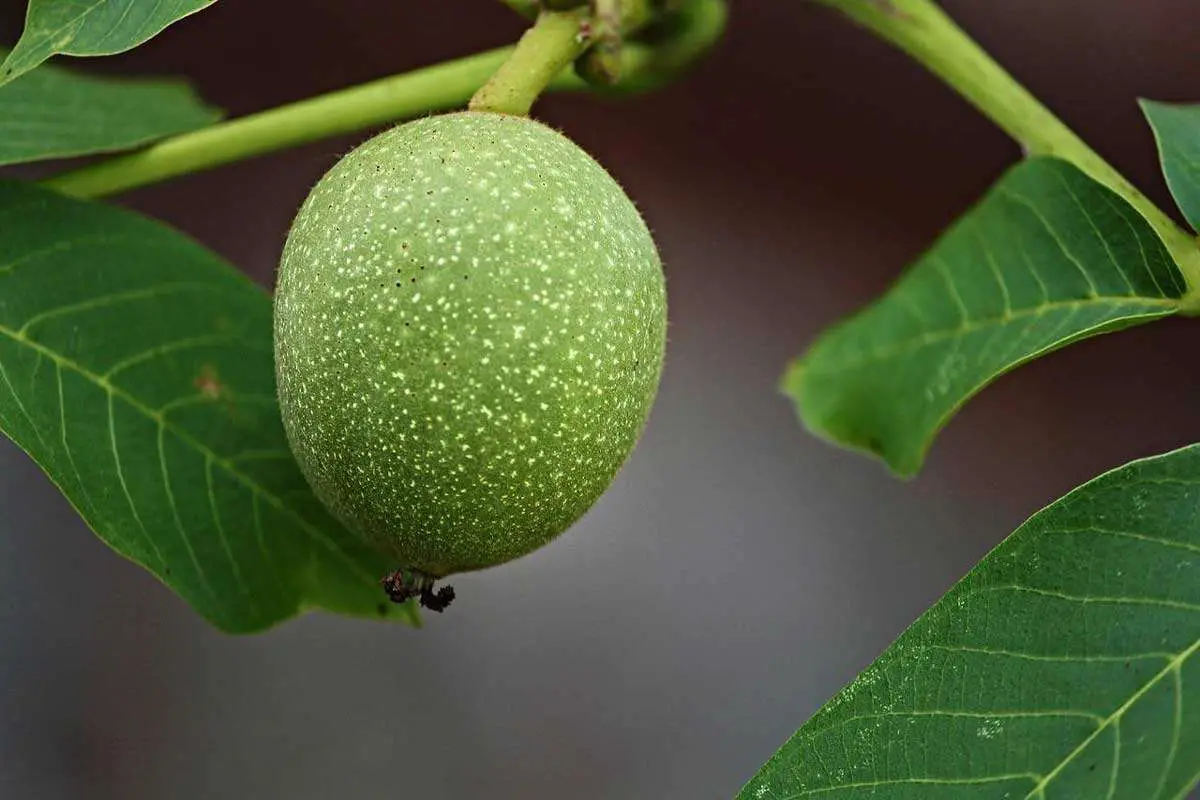
Walnut trees require at least 7 years to mature and start bearing fruit between the age of 7-15 years. You can expect a high yield of walnut fruits every 2, 3 years in between them the yield will be low.
Walnut trees produce the maximum yield when they reach the age of 20 years from planting. The species of the walnut tree planted also plays a vital role in knowing when to expect fruit from it.
Is Your Walnut Tree Not Producing Any Fruits?
Having a walnut tree in your backyard with a direct source of the tree’s fruit must be amazing, however, is your walnut tree producing the optimal amount of walnuts that it can?
There can be several factors that can affect the walnut plant’s fruit-producing capabilities. These factors must be taken care of for a healthy tree to get maximum yield of your walnut fruit.
Here are the factors that can affect the yield of your walnut tree:
1. The Late Frost
When freezing occurs in spring after a significant amount of warmth has already accumulated, it exposes developing plant tissue to frost. The walnut plant needs to prepare for the cold climate. Therefore they cease production and growth to conserve energy in order to protect themselves from the cold.
Sometimes the early bloom of walnut trees is killed off by the late frost. The trees, in this case, do not bear fruit as the catkins and flowers needed for pollination do not bloom and the fruit cannot develop without pollination.
2. Not Enough Nutrients
The fruit-bearing ability of your walnut tree can be affected if it is not receiving its required share of nutrients from the soil.
Nutrients are transported inside the tree to leaves and stems. Nutrients are essential for an array of tasks that include the growth and production of various chemicals.
Therefore, a lack of nutrients can hinder the production of new buds and fruits.
The walnut tree does not require extra help to grow once it is established. This is because the walnut root system can gather nutrients for itself.
A number of reasons can, however, cause the soil to lack nutrients. Often this happens due to a lack of use of the right fertilizers.
Fallen leaves are also a great, natural source of nutrients for your walnut tree. The tree leaves that have fallen decompose into the soil to provide nutrients for the next couple of years.
Areas with frequent cleaning of fallen leaves can unintentionally rid the walnut tree of its natural fertilizer cycle.
3. Pests
The walnut husk fly is the kind of pest you need to worry about if you have a walnut tree in your backyard. Adult husk flies will lay eggs beneath the walnut husk surface after mating.
Upon hatching, maggots will feed on the husk for a few weeks and eventually drop to the soil. These maggots will pupate and start the whole process again once they drop and reach the soil.
Walnuts are still edible after the maggots have fed on them but they get stained. It won’t feel appetizing after knowing that maggots were feeding on them.
4. Alternative Period of Pollination
The walnut tree is a self-pollinating tree which means both the male and female parts are present in the same plant.
It is possible that the male part spreads pollen around the time when the female part is not receptive.
Self-pollination will only occur if both male and female parts work together, which is not always the case in walnut trees. This causes the tree to bear less walnut fruit all year round.
Protect Your Tree From Unfavorable Conditions
It’s obvious that you need to provide your tree with optimum conditions for it to grow properly. To ensure this there are a number of things that you need to do before and after planting a walnut tree.
1. Correct Species For The Correct Climate
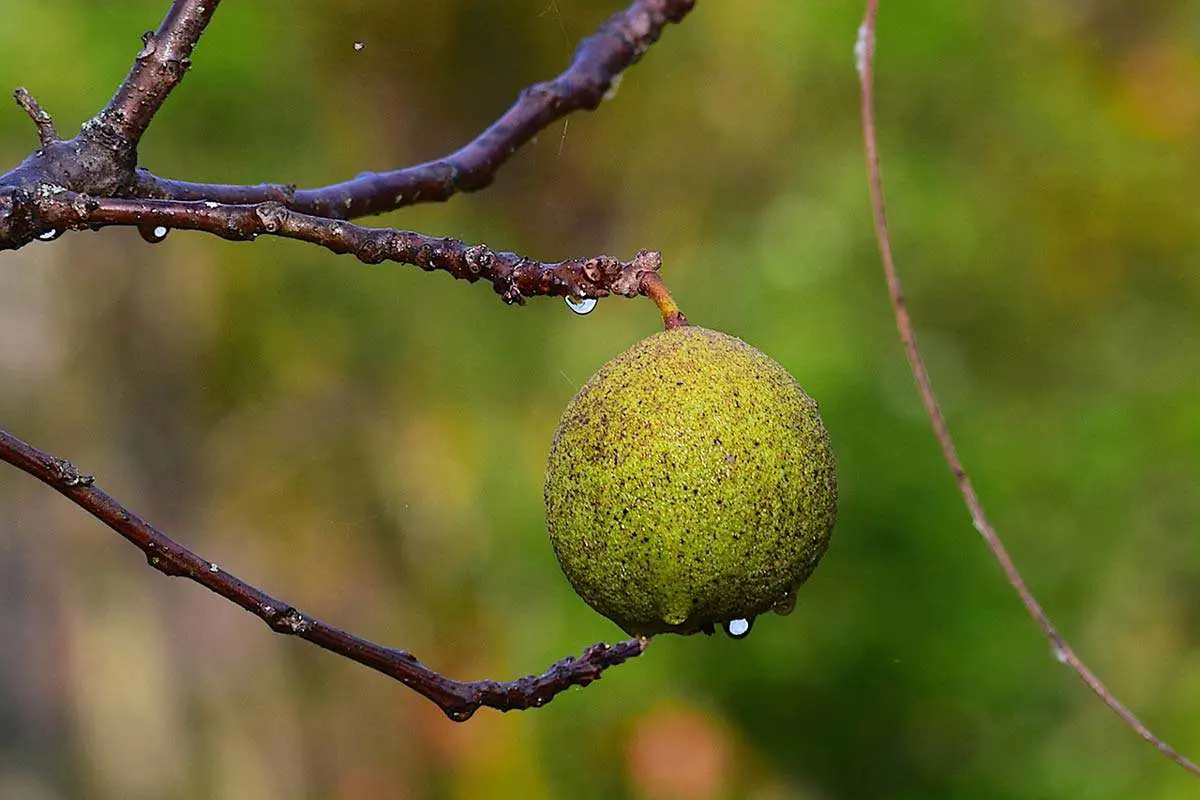
Now that we know what climate is preferable for walnuts, it is better to do some research before planting a walnut tree.
Get the correct species of walnut tree for the climate that you have in your region. A simple search online or a visit to your local plant nursery may be sufficient.
2. Provide Complete Nutrients
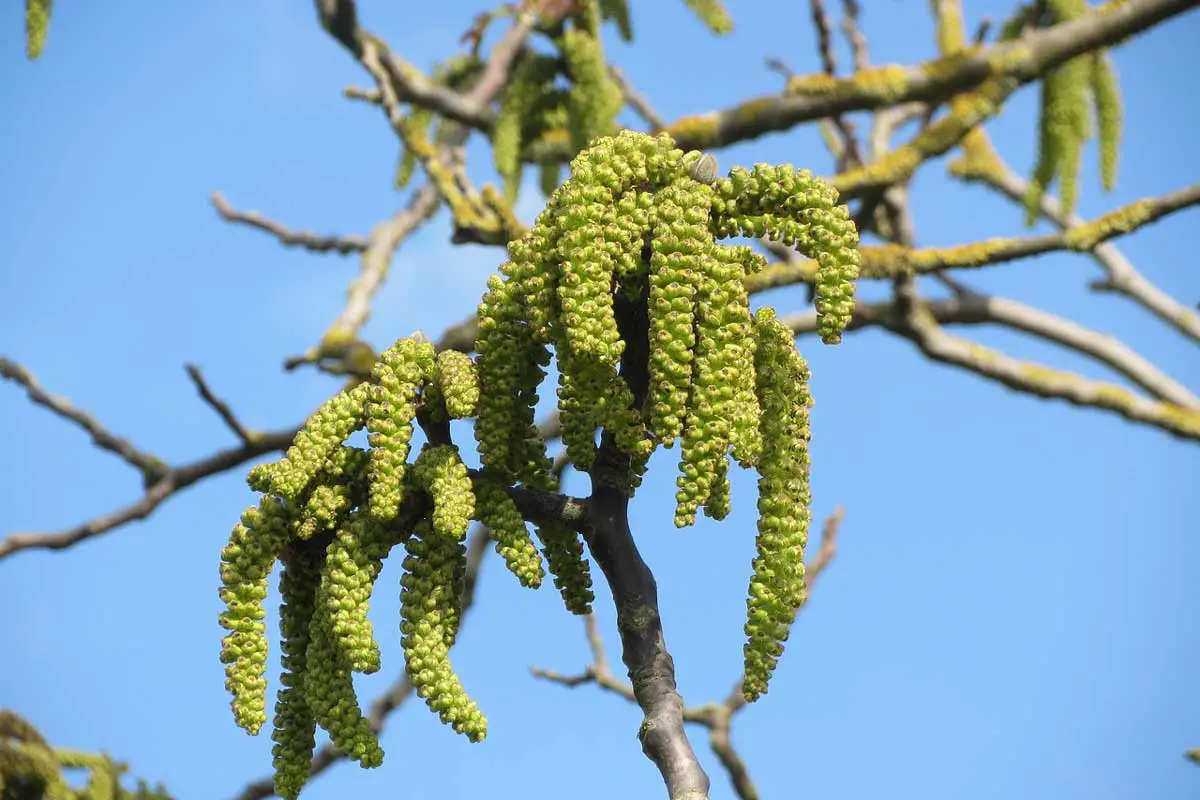
Make sure your walnut tree is getting the right amount of nutrients from the soil. You need to have the right fertilizer for your tree and in addition, you can add some more things like the organic spikes which are hammered down around the tree.
Organic spikes release the required nutrients slowly into the soil which are then absorbed by the tree.
3. Pests Control
There are certain measures that can be taken in order to prevent the husk flies from preying upon your walnut tree.
- You should remove the nuts as soon as they fall into the ground. By doing so you can prevent the larvae on the husk from reaching the soil and stop the entire cycle of the husk flies.
- Use a landscape fabric around your walnut tree, this will prevent the larvae to reach the soil directly.
- You can use different kinds of fly traps for the adult husk flies so they can’t reach the fruit to lay eggs.
Age of Walnut Tree
Walnut trees in the wild can live and survive up to 200 years on average and can reach a height of around 100 ft.
But just like us, humans, as the walnut tree ages, the productivity of the walnut tree is affected as well.
A young walnut tree can produce fruit without a problem every year.
As the tree starts growing above a certain height, it gets harder for the tree to transport the water and the nutrients required to produce more buds and fruits.
Trees in orchards are kept smaller for this reason. According to the University of California, Davis. A walnut tree lasts for around 35 years in orchards.
The walnut trees in orchards are kept smaller for optimum yield of walnut fruits and subsequently walnuts.
4 Ways To Make Your Walnut Tree Stop Producing Fruit
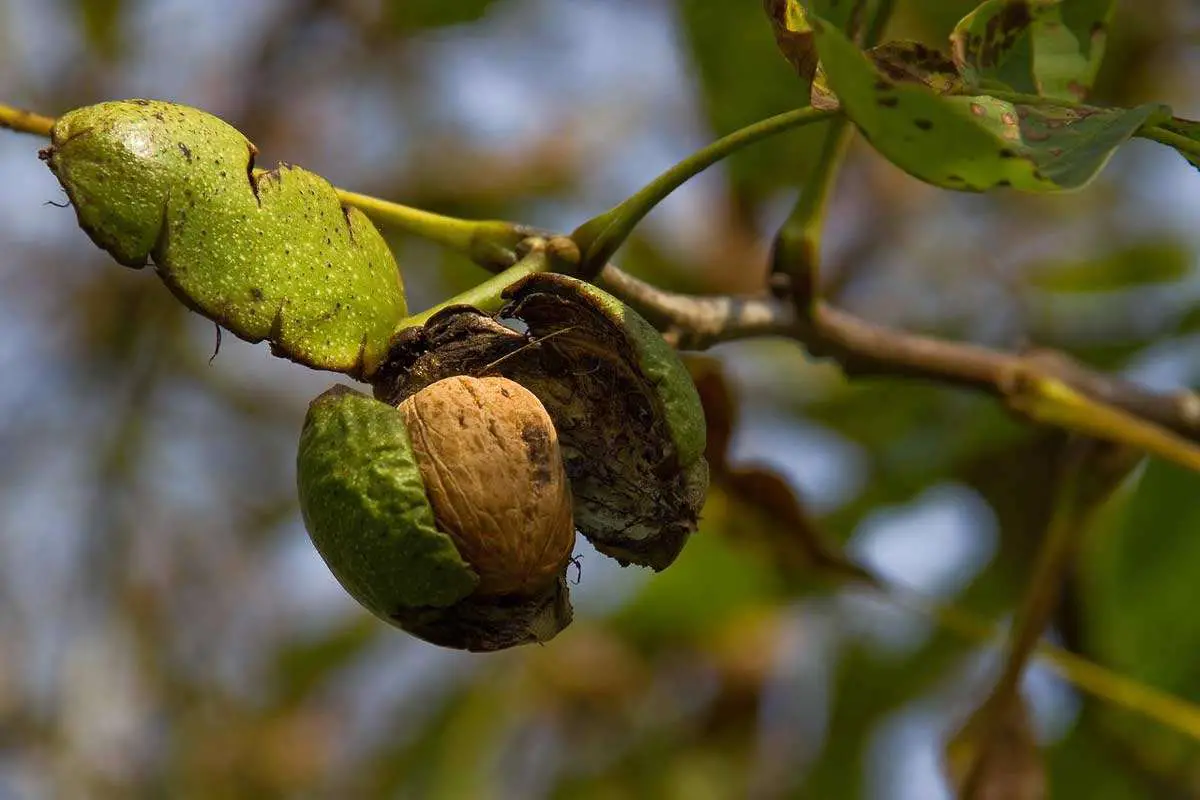
Considering how delicious walnuts are, it’s hard to think anyone will ever get tired of their tree producing walnuts for them. But it’s not always a happy experience with walnut trees for some.
The falling walnut fruit can do some damage if a car is parked beneath them. The walnut fruits are heavy and can leave a dent or even damage the windshield of the car.
Moreover, walnut fruits and husks can make a mess in your backyard and you might need to keep cleaning them continuously. The litter of the green and blackened fruits and husks is not always a pleasant sight for everyone.
There are some steps that you can take to stop your walnut tree from producing fruit though.
1. Using a Specific Fertilizer
Fertilizers are of different kinds, the type of fertilizer you use will determine the condition of your tree.
Fertilizers high in nitrogen can prevent your walnut tree from getting the nutrients that promote the growth of fruits. No nutrients mean no fruits.
2. Clipping New Walnut Blooms
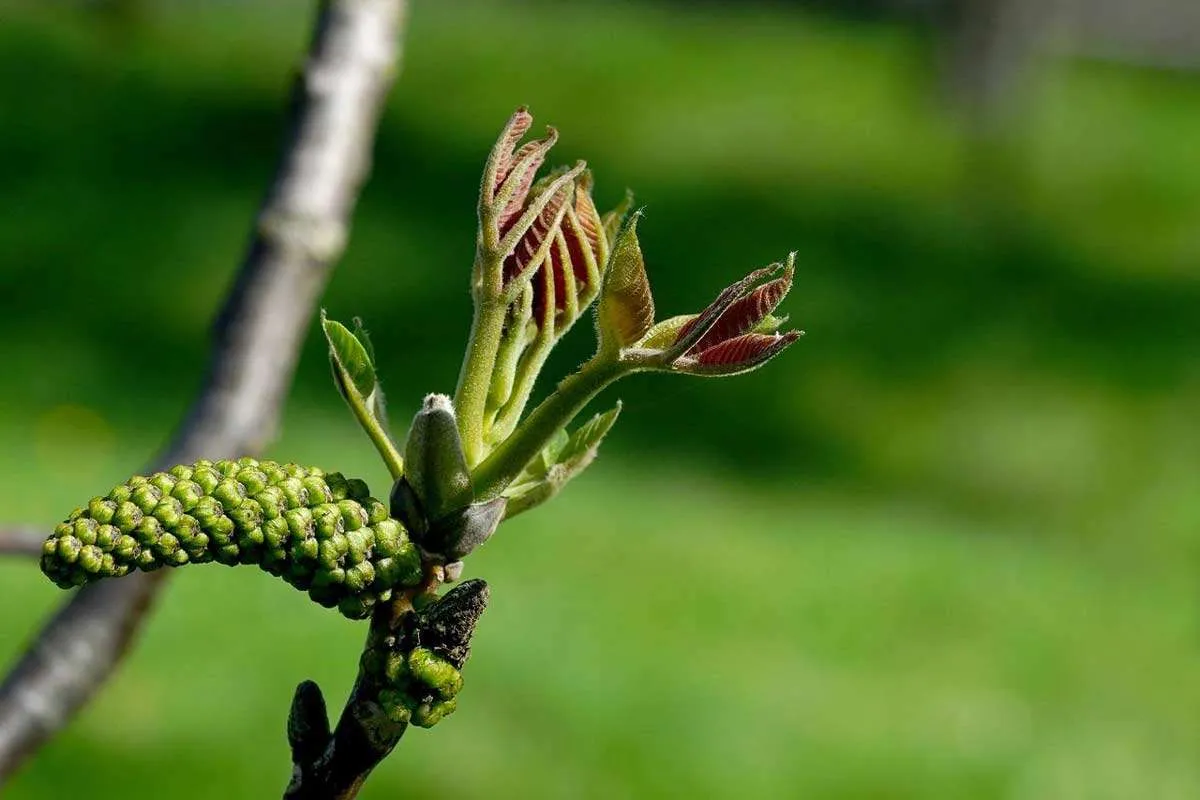
You can clip the new walnut blooms and stop them from maturing. The flower will not blossom and it will stop the process of pollination hence, preventing the tree from producing walnut fruit.
3. Getting Rid of Walnut Saplings
Squirrels can cause new walnut trees to grow. Squirrels bury their walnuts in the soil for later consumption but forget sometimes.
This causes new walnut trees to emerge at random places. These new walnut saplings must be clipped or sawed down.
4. Beware of Wind Pollination
Black walnut trees can self- and wind pollinate. Having more than one black walnut tree in the vicinity can trigger wind pollination which will increase your black walnut fruit yield.
Black walnut trees can also harm your garden by releasing a chemical called juglone.
Juglone is toxic to other plants, and helps reduce competition for resources in the soil by killing other plants in the area. This is why the black walnut is an especially difficult plant to manage.
In particular, it is these unique survival characteristics of the black walnut plant that allow it to flourish throughout North America. With the propensity of black walnut trees to grow in the wild, it is no wonder that black walnuts are also called wild walnuts.
